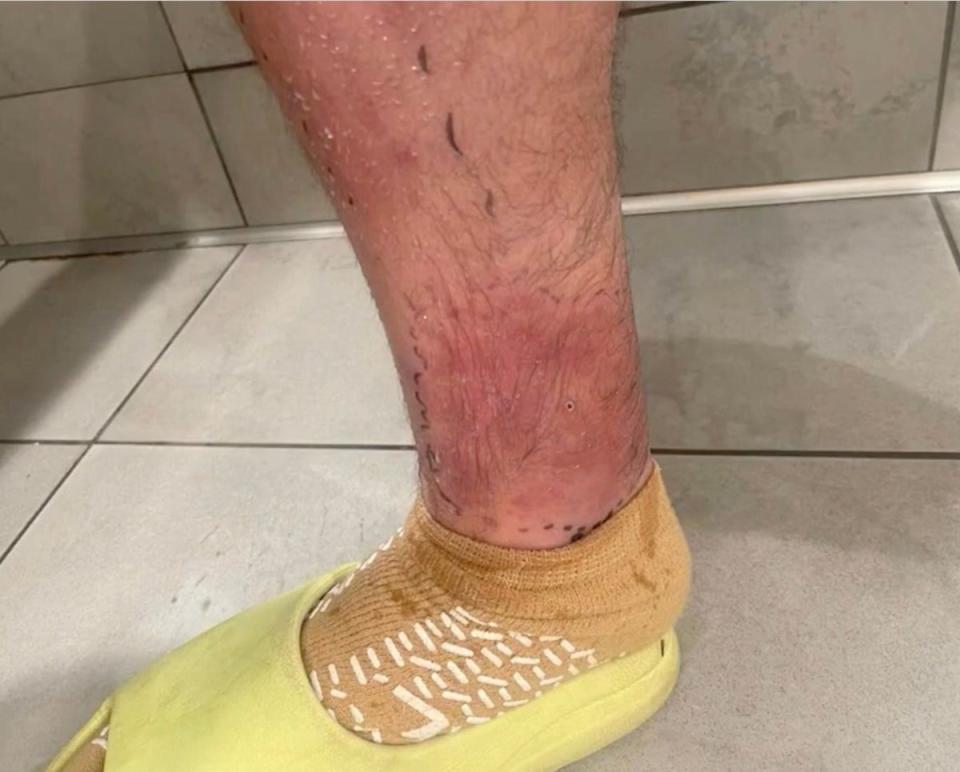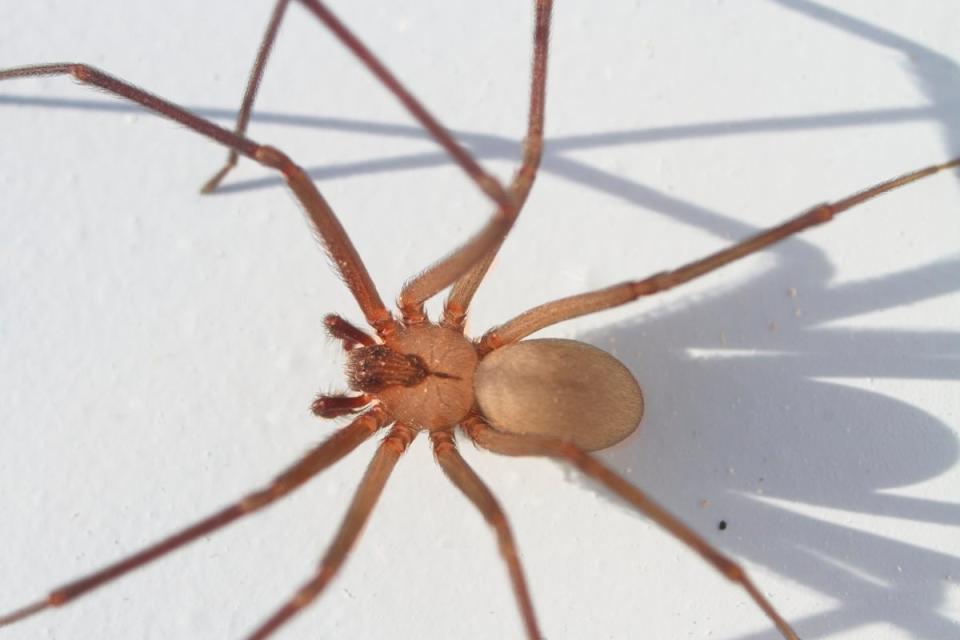A man bitten by a household spider nearly lost his leg. These are the symptoms he tells others to watch for

A 30-year-old Georgia resident is warning others about the symptoms of a brown recluse spiderbite after he nearly lost his leg.
Gabe Lustman said he initially ignored the symptoms, deciding they didn’t warrant medical attention. But when he finally did see a doctor, he was told that had he waited just one more day, his infection could have been “uncontrollable”.
“I came in at a very, very lucky time,” Lustman told CBS News. “Because if I didn’t, I could have lost my leg.”
He added that the experience taught him to pay closer attention to his body. “Make sure you go to seek professional medical attention,” he said. “This is your body, you need to attend to it and take care of it because you don’t know how serious these things can really get and how bad it could be. I didn’t realise that.”
Brown recluse spiders are found in the southern and central regions of the US, per the National Institutes of Health (NIH). While they’re most common there, they’ve also been found near big cities outside these regions.

The spiders are often found in sheltered, dark areas, such as woodpiles, and they’re small, just one to one-and-a-half inches long. Brown recluse spiders have a brown, violin-shaped mark on their upper body and light brown legs. Their lower body can be tan, brown, yellow, or green, and they have three pairs of eyes.
Brown recluse spider bites can cause localised pain and a stinging sensation. A small white blister usually forms where the bite occurred, per the Centers for Disease Control and Prevention (CDC).
If you or someone with you has been bitten by a brown recluse, you should call 911 or your local poison centre. (If you don’t know the number, you can call the national Poison Help hotline at 1-800-222-1222.) When a brown recluse spider bites, it exposes its victim to venom that contains toxic chemicals. These bites can be fatal; death from a brown recluse spider bite is more commonly seen in children than adults.
If you go to an emergency room or urgent care centre, you should take the spider that bit you with you if you’re able, making sure it’s stored in a secure container. This may help doctors determine what’s causing your symptoms and recommend appropriate treatment.
A bite can cause itching, chills, fever, nausea, a red or purple colour that forms a circle around the bite, sweating, a large ulcer at the site of the bite, or a general feeling of discomfort. Though they’re less common, people who have been bitten by a brown recluse might experience yellowing of the whites of the eyes and the skin, blood in urine, or even seizures, kidney failure, and coma.

In some cases one’s blood supply to the area of the bite can be cut off. This will cause black tissue scarring that may slough off up to five weeks later, leaving fatty tissue and an ulcer in its place, which could take months to heal.
Lustman said he felt a lot of pain after he got bit. “My leg was very sore, and I noticed like a little bite mark, but my whole leg was starting to swell up and it was turning red and purplish and like all these nasty colours,” he said. “[I had] sharp pain shooting down my leg when I would stand up.” Lustman added that he tried elevating his leg, but that the relief didn’t last long.
Eventually, red streak marks—that looked similar to scratch marks—appeared on his leg. These can be a sign of infection and should always prompt medical attention, per the Mayo Clinic. On certain skin tones, these marks may not be noticeable, or they may appear as a different colour, such as purplish-grey.
Symptoms of a brown recluse spider bite can be treated if caught in time, per the NIH. Treatment may include painkillers and antibiotics, if the wound from the bite has become infected. In serious cases, patients who have been bitten by a brown recluse spider may receive intravenous (IV) fluids and breathing support, for example, through a ventilator.
Lustman said he’s grateful he sought help when he did, but that he’s still suffering from the symptoms of his bite. “I can walk again,” he said, “but when I touch my leg [or] if I bump it or something, it’s still painful.”


